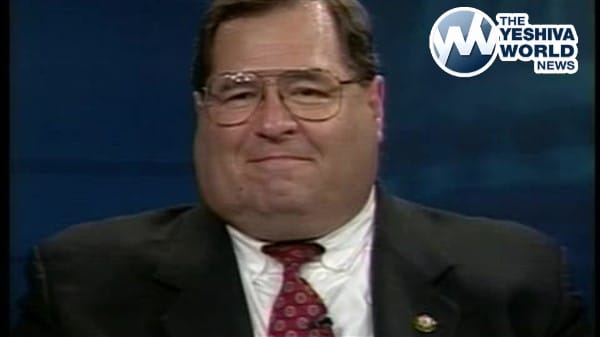 The Federal Reserve announced Wednesday it will spend up to $300 billion over the next six months to buy long-term government bonds, a new step aimed at lifting the country out of recession by lowering rates on mortgages and other consumer debt.
The Federal Reserve announced Wednesday it will spend up to $300 billion over the next six months to buy long-term government bonds, a new step aimed at lifting the country out of recession by lowering rates on mortgages and other consumer debt.
At the same time, the Fed left a key short-term bank lending rate at a record low of between zero and 0.25 percent. Economists predict the Fed will hold the rate in that zone for the rest of this year and for most — if not all — of next year.
Fed purchases should boost Treasury prices and drive down their rates. That would ripple through and lower rates on other kinds of debt. The last time the Fed set out to influence long-term interest rates was during the 1960s.
The Fed also said it will buy more mortgage-backed securities guaranteed by Fannie Mae and Freddie Mac to help that battered market. The central bank will buy an additional $750 billion, bringing its total purchases of these securities to $1.25 trillion. It also will boost its purchase of Fannie and Freddie debt to $200 billion.
“This is not only going to keep mortgage rates low for a long period of time,” said Greg McBride, a senior financial analyst at Bankrate.com. “The mere announcement may produce a honeymoon effect and bring mortgage rates down to even lower levels in the coming days.”
In addition, the Fed said a $1 trillion program to jump-start consumer and small business lending could be expanded to include other financial assets.
The program — which is rolling out this week — currently is focused on spurring lending for autos, education, credit cards and loans for business equipment. The government already has announced an expansion to include commercial real-estate assets. Any broadening of the program would be beyond that area.
The Fed’s action is keeping Wall Street’s big rally alive. After being down earlier in the day, the Dow Jones industrial average added about 30 points in afternoon trading, and broader indicators also rose.
Fed Chairman Ben Bernanke and his colleagues are taking the new steps as the economy sinks deeper into recession.
Since the Fed last met in late January, “the economy continues to contract,” the policymakers observed.
“Job losses, declining equity and housing wealth and tight credit conditions have weighed on consumer sentiment and spending,” they said.
Businesses, meanwhile, are facing weaker sales prospects and credit troubles have them cutting inventories. Problems overseas have crimped demand for U.S. exports, dealing domestic companies another blow, the Fed said.
Across the Atlantic, the Bank of England last week began buying government bonds from financial institutions as it turned to other ways to help revive Britain’s moribund economy. The Bank of England, like the Fed, already had lowered its key interest rate to a record low of 0.5 percent.
Finance leaders from top economies have discussed coordinating actions from their governments and central banks to provide a more potent punch against the global financial crisis.
Still, the Fed hoped its actions, the government’s banking rescue effort, and President Barack Obama’s $787 billion stimulus of increased government spending and tax cuts eventually will help revive the economy.
“Although the near-term economic outlook is weak, the committee anticipates that policy actions …. will contribute to a gradual resumption of sustainable economic growth,” the Fed said.
Obama has urged Americans to be patient, saying it will take time for his revival programs to work.
Bernanke has repeatedly said that stabilizing the nation’s financial system is key to turning around the economy. If that can be done, then the recession might end this year, setting the stage for a recovery next year, he said.
But even in this best-case scenario, the nation’s unemployment rate — now at quarter-century peak of 8.1 percent — will keep climbing. Some economists think it will hit 10 percent by the end of this year.
The recession that began in December 2007 already has snatched a net total of 4.4 million jobs and has left 12.5 million searching for work.
And the economy is still sinking. It contracted at 6.2 percent in the final three months of 2008, also the worst showing in a quarter-century. Analysts believe the economy in the current January-March quarter is contracting at a pace between 5.5 and 6 percent or more. They expect the economy also will continue to contract in the April-June quarter.











3 Responses
At least they aren’t wasting any taxpayer dollars in doing this (ahh, if only my ATM allowed withdrawls without requiring deposits).
any any environmentalists out there – don’t worry, no trees will be cut down for this since everything is automated
akuperma, they are not wasting taxpayers’ money? And how much will it cost us in taxes in the end?
Nothing in taxes. The Federal Reserve Board isn’t even really a government agency. They get there money from a variety of sources, including (and in this case) printing it. Any profit they make, beyond paying themselves a lot more than civil servants get, has to be returned to the Treasury, which lowers taxes.
The danger is that by increasing the money supply, they will eventually cause an increase in inflation. Bernanke feels the risk is worth it. It should be noted this might be a classic case of fighting the last war, some the military is accused of – he is acting as if this is 1931 all over again, and he might be wrong. Of course they can sell those securities back to the market in the future, which will raise interest rates, and reduce the money supply thereby reducing inflation.